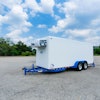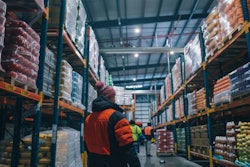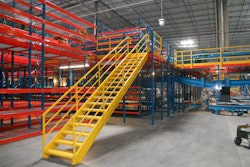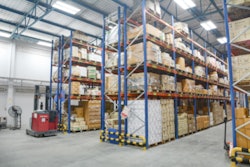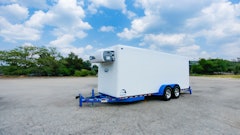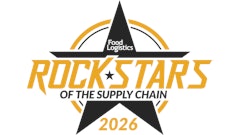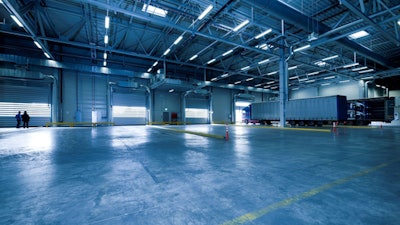
The cold storage sector is turning up the cool (and the heat), fueled by market pressures, technological advancements, and increasing sustainability standards. In Western Canada, demand for perishable goods is closely linked to the boom in e-commerce, expansion of grocery delivery services, and population growth.
As consumers prioritize instant access to fresh food, the pressure is on to deliver efficient, reliable cold storage solutions. To stay ahead, operators are embracing automation, optimizing facility locations, and investing in resilient, energy-efficient systems.
With these significant shifts underway, here are the trends to watch for in 2025.
Increased demand
Rising e-commerce, grocery delivery services, and population growth are driving a significant uptick in demand, particularly for perishable goods such as seafood, produce, and dairy in Western Canada. As consumer preferences shift toward more immediate access to fresh food, cold storage operators must expand their capacity and operational efficiency to meet this growing need.
Reliance on reliable cold chain logistics will only rise, particularly as consumers increasingly utilize online grocery shopping platforms and home delivery services.
Automation and technology integration
Automation is rapidly becoming a cornerstone of cold storage operations. With advancements in smart systems and robotics, facilities are now able to streamline operations, enhance temperature control, and reduce human error in both storage and processing environments. Technologies like Internet of Things (IoT) sensors, artificial intelligence (AI)-powered analytics, and automated sorting systems, along with machine learning algorithms (MLA), enable operators to monitor conditions in real time and optimize inventory management, ensuring that perishable goods remain within optimal temperature ranges.
Together, these innovations boost operational efficiency, enhance sustainability, and lower labor costs, positioning facilities as leaders in an increasingly competitive market.
Strategic investments
Proximity to urban centers has become a critical factor in reducing transportation costs and strengthening overall operational efficiency. As demand for the quick delivery of fresh products rises, cold storage facilities closer to major population hubs are becoming essential.
Significant investments are expected in these regions, where the need for cold storage is growing dramatically. Outdated facilities are also being renovated to meet modern standards and sustainability mandates. By focusing on strategic urban locations, operators can ensure that perishable goods reach consumers faster, cutting down on transportation time and reducing the risk of spoilage.
Resilience in supply chains
The pandemic highlighted vulnerabilities in global supply chains, particularly in the cold storage sector, including capacity constraints, geographic bottlenecks, outdated infrastructure, and labor shortages. In response, focus has turned to building more resilient cold chain systems with investments in regional food processing facilities to reduce dependence on long-distance transportation and improve supply chain flexibility.
By localizing certain aspects of the supply chain, cold storage facilities can better handle disruptions and improve the flow of goods, ensuring a steadier supply of fresh produce and other perishables.
Food safety and hygiene
With stricter regulations and growing consumer concerns about food safety, cold storage operators are adopting advanced packaging technologies and adhering to more rigorous hygiene standards. Vacuum-sealing and modified atmosphere packaging (MAP) are extending the shelf life of perishable goods and preserving their quality.
UV-C light sterilization and antimicrobial coatings are being used to sanitize storage environments and effectively prevent contamination. As consumers become more discerning about the safety and quality of the food they purchase, cold storage facilities are investing in these technologies to maintain trust and meet increasingly stringent regulations.
Strategic location development
Cold storage facilities near key trade routes are now vital. Along with streamlining the flow of goods for domestic distribution, the move also plays a crucial role in international trade. By positioning cold storage facilities near ports and airports operators can ensure perishable goods are exported and imported efficiently, meeting the growing demand for fresh food across borders.
Sustainability
Energy-efficient designs and sustainable construction materials are taking center stage in 2025. Cold storage operators are investing in scalable, green technologies that reduce energy consumption and minimize their environmental footprint.
In addition to building greener facilities, sourcing practices are evolving to meet consumer demands for ethically produced foods, with a growing shift toward locally grown, plant-based, and alternative proteins. This trend underscores sustainability efforts and resonates with consumer demand for environmentally-friendly food options.
The future of cold storage holds immense potential, driven by cutting-edge technologies and a laser focus on sustainability. With demand for perishable goods steadily growing, operators are adopting automation, optimizing systems, and prioritizing eco-conscious practices to maintain a competitive edge.
These trends position the industry to revolutionize food logistics with smarter, more efficient, and sustainable solutions.




